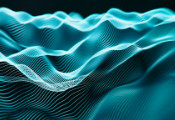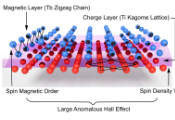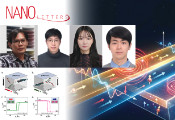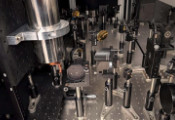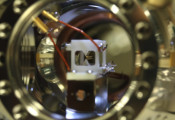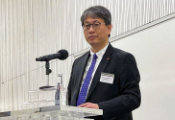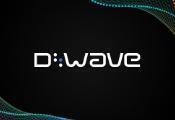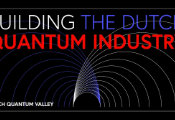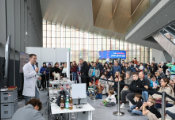New Research Suggests a Way to Capture Physicists’ Most Wanted Particle — the Graviton
Hoboken, N.J. August, 23, 2024 – A team led by Stevens physics professor Igor Pikovski has just outlined how to detect single gravitons, thought to be the quantum building blocks of gravity — and making that experiment real should be possible with quantum technology, they suggest, in the near future.
Pikovski led a team of first-year graduate students Germain Tobar, Thomas Beitel and postdoctoral researcher Sreenath Manikandan. Their results on “detecting single gravitons with quantum sensing” were published in Nature Communications this week.
Pikovski’s team proposed a solution that involves coupling existing physical detection technology — something called an acoustic resonator, basically a heavy cylinder — and fitting it with improved energy state-detection methods (also known as quantum sensing).
“Our solution is similar to the photo-electric effect that led Einstein to the quantum theory of light,” explains Pikovski, “just with gravitational waves replacing electromagnetic waves. The key is that energy is exchanged between the material and the waves only in discrete steps – single gravitons are absorbed and emitted.”
“We need to cool the material and then monitor how the energy changes in a single step, and this can be achieved through quantum sensing” says Manikandan, a postdoctoral fellow at The Nordic Institute for Theoretical Physics in Stockholm.
“By observing these quantum jumps in the material, we can deduce that a graviton was absorbed” adds Tobar, now a graduate student at Stockholm University. “We call it the ‘gravito-phononic effect.’”
One of the team's proposed innovations is to use available data from LIGO – a two-facility U.S. observatory that recently confirmed the existence of gravitational waves.
“The LIGO observatories are very good at detecting gravitational waves, but they cannot catch single gravitons,” notes Beitel, a Stevens doctoral student. “But we can use their data to cross-correlate with our proposed detector to isolate single gravitons.”
But the game has now changed: scientists have recently begun to create and observe quantum effects in macroscopic objects. Pikovski realized these macroscopic quantum objects are ideal for seeing single graviton signatures: they interact much more strongly with gravity, and we can detect how these objects absorb and emit energy in discrete steps.
The team began thinking through a possible experiment. Using data from gravitational waves that have previously been measured on Earth, such as those that arrived in 2017 from a collision of two Manhattan-sized (but super-dense) faraway neutron stars, they calculated the parameters that would optimize the absorption probability for a single graviton.
“It turns out, this measurement can be done,” says Manikandan, “for example by using a device similar to the Weber bar.”
A newly designed quantum detector would be cooled to its lowest energy, then would be set vibrating very slightly by the passage of a gravitational wave. Super-sensitive energy sensors could then theoretically capture how those vibrations changed in discrete steps. Each discrete change (also known as a quantum jump) would indicate a single graviton event.
Of course, there’s a catch with catching gravitons. The necessary sensing technology doesn’t quite yet exist.
“Quantum jumps have been observed in materials recently, but not yet at the masses we need,” points out Tobar. “But technology advances very rapidly, and we have more ideas on how to make it easier.”
“We’re certain this experiment would work,” enthuses Beitel. “Now that we know that gravitons can be detected, it’s added motivation to further develop the appropriate quantum-sensing technology. With some luck, one will be able to capture single gravitons soon.”
But while new quantum technologies are critical, the inspiration for this result came from elsewhere. “We know that quantum gravity is still unsolved, and it’s too hard to test it in its full glory” says Pikovski, “but we can now take the first steps, just as scientists did over a hundred years ago with quanta of light.”

